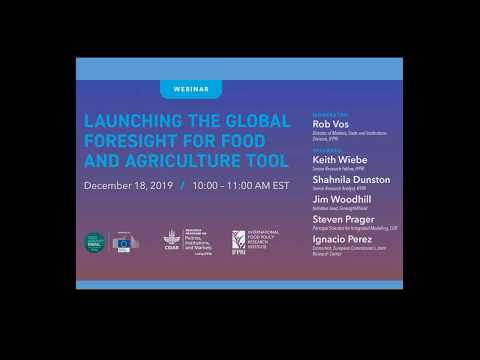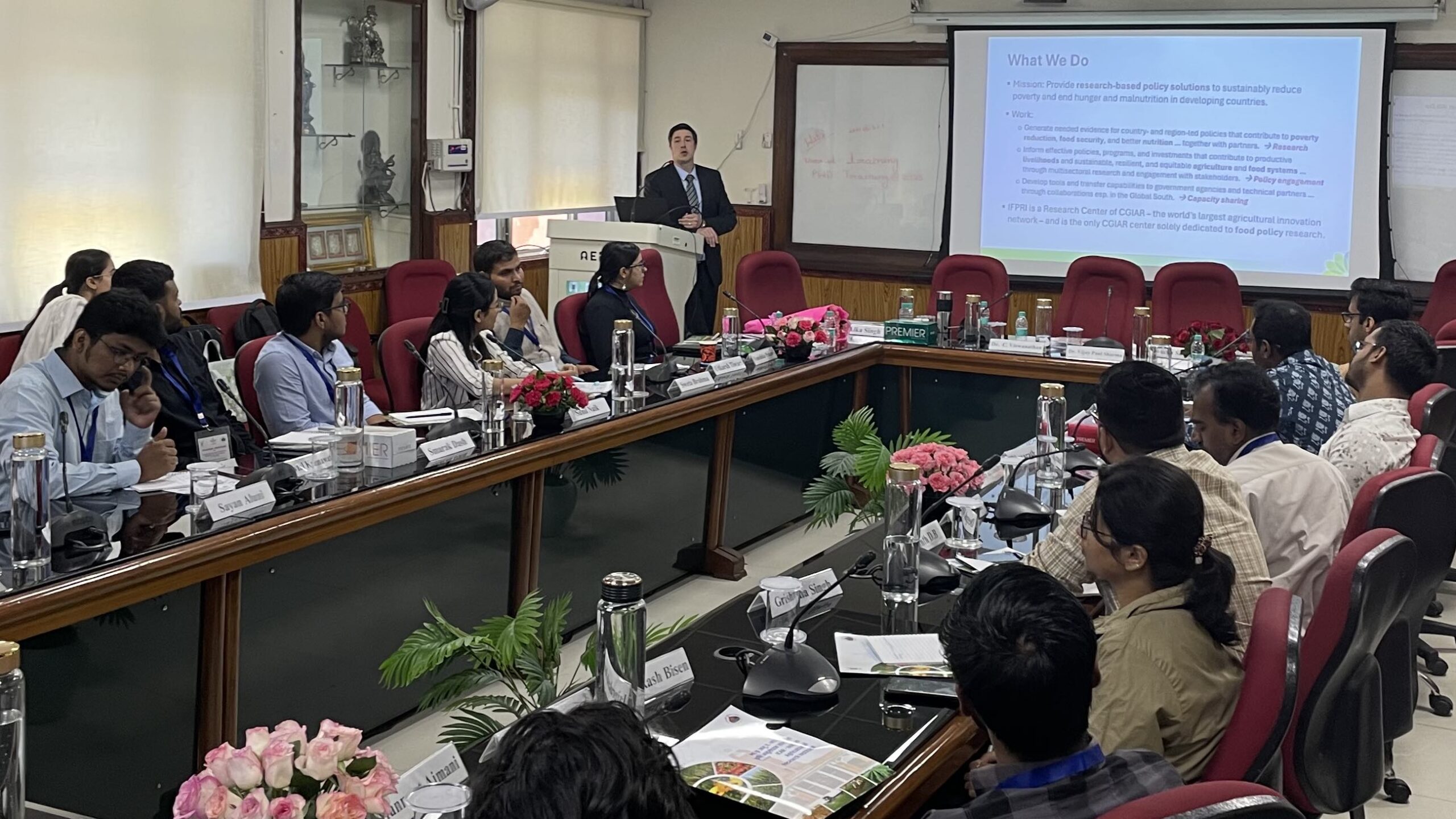How can we feed 10 billion people by 2050? How much and in what ways will climate change impact global food production? What can be done to ensure that the world’s agriculture and food systems remain sustainable in both the short and the long term?
To answer these and other critical questions, researchers and development practitioners often turn to foresight analysis studies that model various possible future scenarios; however, these studies make a lot of assumptions and use highly technical and complex models. A recent webinar co-hosted by IFPRI’s Food Security Portal and the CGIAR Program on Policies, Institutions and Markets (PIM) introduced the new Global Foresight for Food and Agriculture tool, which can help make the findings of such studies more accessible and easily digestible by a broader audience, including policymakers.
Developed by IFPRI’s IMPACT model team and the FSP team, the Global Foresight tool provides researchers and policymakers with a flexible way to explore the impact of various agricultural investment scenarios on agricultural production, productivity, and hunger for the period 2010-2050.
After an introduction by Rob Vos, Director of IFPRI’s Markets, Trade and Institutions Division, IFPRI researchers Keith Wiebe and Shahnila Dunston provided an overview of the IMPACT system of foresight models upon which the new tool is built, as well as an introduction to the features of the tool.
“Our food system faces tremendous challenges from changes in population, income, technology, climate, and policy,” Wiebe pointed out. He continued by highlighting that interactions between all of these factors are increasing in both scale and speed, which requires careful consideration of alternative future scenarios to ensure a sustainable food future. The IMPACT system of models provides such scenarios by looking at water, crop, climate, and economic trends in 160 countries and for over 60 commodities to see how these trends might impact productivity, prices, trade, and food security. The new FSP tool uses IMPACT analysis on the potential impacts of increased investment in agricultural research and development, irrigation and water-use efficiency, and improved access to markets.
Dunston walked participants through a demonstration of the tool, which included an introduction to the reference scenario and the interactive alternative scenarios. She showed how users can use the various indicators provided to gain a deeper understanding of how changes in investments can impact important channels of the food system, including supply and demand.
The webinar then moved to examples of how foresight analysis can be used in action. Jim Woodhill of Foresight4Food began by discussing the importance of conducting analysis using tools like the new FSP foresight tool.
“Too often, too many people are looking backwards, so how can we use these sorts of tools to open up dialogues and discussions . . . about the future and more or less desirable paths?” he said.
When talking about food systems and how action in one part of the system can impact other parts, Woodhill pointed out, three factors play a key role: actors, incentives, and outcomes. All of these factors need to be more deeply understood in order to enact sustainable policies, which is where foresight tools come in. These tools help different actors in the food system explore how various incentives will impact food security and agriculture outcomes. By clarifying different possible future scenarios, tools like the new FSP tool will also help more people, including policymakers, understand the need for foresight analysis to drive more informed decision-making and influence positive change.
Steven Prager of the International Center for Tropical Agriculture (CIAT) emphasized that to be effective, foresight analysis should be demand-driven; as a result, foresight practitioners need to learn how to drive demand. “We need to understand what kind of information people need to improve decision-making,” he said.
Prager highlighted an example from CIAT’s foresight work in which foresight analysis was used to help contextualize climate challenges faced both nationally and regionally in Latin America and the Caribbean. By providing both country-level and regional scenarios, the program helped policymakers better understand how their policy goals might impact larger regional climate challenges and policies. As policymakers learned more about the potentials of foresight analysis, he said, demand has started to switch from being driven by development organizations like CIAT and the Inter-American Development Bank to being driven by policymakers themselves. This shows the importance of both responding to existing demand for foresight analysis and cultivating new demand through foresight literacy efforts.
Ignacio Perez of the European Commission’s Joint Research Committee discussed how wide-ranging foresight analysis can be, looking at short-term, medium-term, or long-term trends. He gave a brief introduction of the EC’s own array of foresight models for policy analysis and provided an example of how foresight analysis can be successfully used to drive policy change. The EC’s EcAMPA model provides an economic assessment of how greenhouse gas (GHG) mitigation policies might impact agriculture in the European Union by 2030 (the medium-term by EC definitions). Specifically, the model looks at how the EU’s 20% emissions goal could impact the region’s beef production.
“It opened up policymakers’ eyes to . . . the costs of mitigating on agriculture are not as negligible as some may think,” Perez concluded. The results of this model’s analysis were included in recent EU legislation.
The webinar concluded with a Q&A session with both in-person and online participants. Questions and discussion ranged from the specifics of the IMPACT data and methodology to broader directions for foresight analysis in general. Wiebe ended by emphasizing the need for continued dialogue and iteration around foresight analysis and tools.
“Often it’s tempting to look at results from these models and they seem very precise, but . . . the point is not to say, ‘We project the value of a certain variable in the year 2030’ but rather to say, “If you compare these scenarios, these are the types of factors that are going to make a big or a small difference . . . and to use that to form a dialogue that continues over time.”
View the entire webinar on the event page and access the Global Foresight for Food and Agriculture Tool on the Food Security Portal.
Sara Gustafson is a communications consultant for the Food Security Portal, facilitated by IFPRI.







